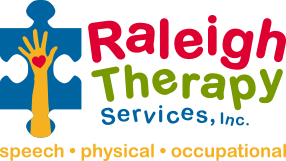Torticollis-What It Is and How Physical Therapy Can Help
~Submitted by Whitney Woodhull-Smith, DPT
Torticollis is the tightening or shortening of the sternocleidomastoid (SCM) muscle (a neck muscle). This tightness causes the head to lean toward the tight muscle and turn away from it. Torticollis is the third most common congenital musculoskeletal anomaly in newborns. It is not always known why torticollis occurs, but it is often caused by the position of the head or neck in utero or during labor and delivery. Plagiocephaly (flattening of the skull) is often related to torticollis and is worsened by spending too much time lying on the back. With torticollis there is a muscle imbalance and the baby has difficulty maintaining their head in the middle. The neck is tight when moved in the opposite direction.
Torticollis is treated with physical therapy. Performing stretches that your PT teaches you is vital to improving the baby’s condition. Physical therapy focuses on stretching the tightened SCM and strengthening the opposite SCM. It also addresses the baby’s gross motor development. Tummy time is key to strengthening neck muscles and slowing down the flattening of the head. If left untreated, torticollis can affect the baby’s skull, facial development, and alignment. Please make an appointment with your pediatrician if you are concerned about your baby’s neck or head shape.
Filed under: RTS Team, Therapy Ideas, Topics




